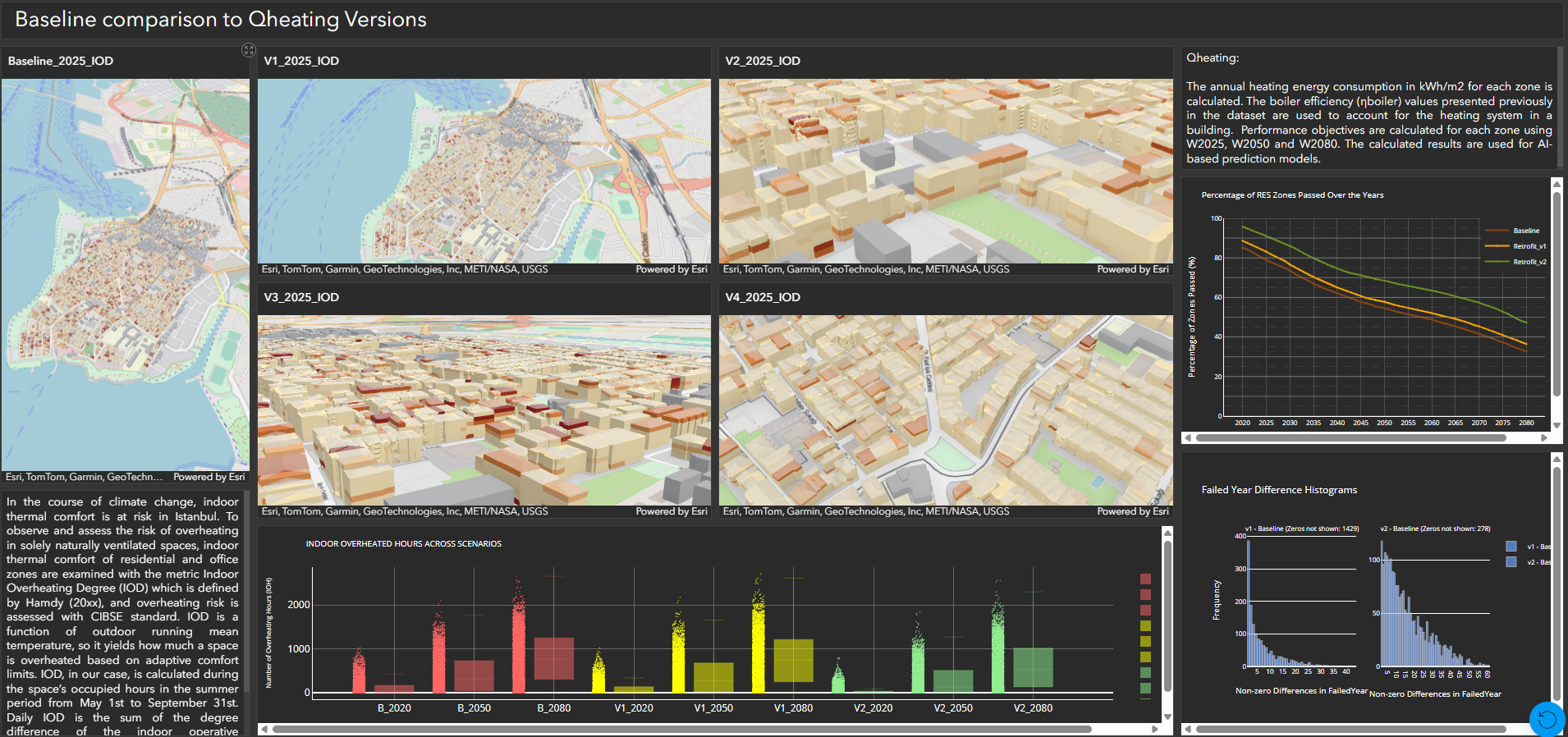
AI-UBEM (Urban Building Energy Model) and UBTEM (Urban Building and Transport Energy Model) are integrated, AI-powered tools that support citywide decarbonization by enabling advanced modeling, simulation, and prediction of both building stock performance and electric vehicle (EV) infrastructure planning. The tools combine physics-based models and AI/Machine Learning algorithms to generate fast, accurate assessments of current and future energy demand and indoor comfort. The tool uses datasets obtained from municipality, and climate projections and offers long-term forecasts for the years 2025 through 2050, accounting for various climate change and energy scenarios.
UBEM capabilities: The Urban Building Energy Models (UBEM) tool helps decision-makers in various scenario analyses during energy renovations. Specifically, the tool can calculate and visualize the building energy demand (heating/cooling, and other electricity demands) and generation (rooftop PV) for the following scenarios: (i) Forecasts energy demand for 2025 and 2050, under climate change scenarios; (ii) Supports active/passive renovation strategies to reduce energy consumption; (iii) helps create Positive Energy Districts (PEDs) by integrating renewables; (iv) Assesses Indoor Overheating Degree (IOD) for thermal comfort evaluation. The tool is based on both physics based building energy models, as well as predictive artificial-intelligence (AI) models that are used for the fast and precise energy demand / generation calculations.
UBTEM capabilities: The UBTEM tool supports decision-making for the optimal placement of e-mobility charging stations that is based on (i) previous data on parking locations, and (ii) potential PV electricity generation. As such, the tool can help decarbonizing e-vehicles using the surplus on-site electricity generation.
By combining the building and transport sectors, AI-UBEM/UBTEM enables municipalities to make evidence-based decisions that align with sustainability goals while also offering a user-friendly interface that encourages stakeholder participation and planning transparency.
In Istanbul, the AI-UBEM/UBTEML tools are being applied to the Kadıköy district and an urban square prototype, supporting both building renovations and e-mobility planning. Key contributions include the development of a 3D model and analysis of 2,455 buildings; scenario modeling for building energy performance and photovoltaic (PV) integration; optimization of PV-powered e-scooter charging stations; evaluation of retrofit impacts under various climate change scenarios; return-on-investment analysis for clean energy technologies; and AI-based decision-making to guide planning efforts toward a carbon-neutral transition.
Prof. Dr. İpek Gürsel Dino
ipekg@metu.edu.tr
Dr.İlkim Canlı
ilkim.canli@odtugunam.org
Elşen Aydın
elsen.aydin@odtugunam.org
Prof.Dr. Raşit Turan
rasit.turan@odtugunam.org




